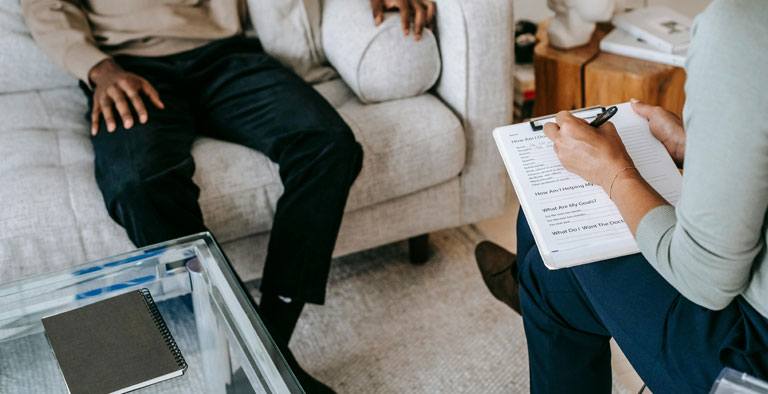How to Get Rid of Attachment Issues: A Guide to Building Healthier Relationships
Attachments can make relationships feel like a rollercoaster. One minute everything is fine and the next you’re in a spiral of anxiety, fear or emotional withdrawal. Whether it’s always worrying your partner will leave, struggling with boundaries or feeling like you can’t rely on anyone, attachments can get in the way of the healthy connections we all want. But the good news is you don’t have to stay stuck in these patterns forever.
If you’re asking yourself how to get rid of attachments you’re already on the right track. Knowing there’s a problem is the first step to making a change. So let’s break it down—what are attachments, why do they happen and how can you start to heal?
What Are Attachment Issues?
Attachment issues often come from our earliest relationships—usually with our parents or caregivers. These early experiences shape how we connect with others as adults. If those early relationships were unstable or inconsistent, it can lead to attachment problems later on.
There are different types of attachment issues, but the main ones are:
- • Anxious attachment: You constantly worry that people will leave you or don’t love you as much as you love them. You might feel insecure in relationships and need a lot of reassurance.
- • Avoidant attachment: You tend to keep people at arm’s length. Maybe you’ve been hurt in the past, so you avoid getting too close to anyone now. Independence feels safer than intimacy.
- • Fearful-avoidant (disorganized) attachment: This is a mix of both anxious and avoidant attachment. You want closeness but fear it at the same time, which creates a lot of confusion in relationships.
Recognizing which of these sounds familiar can help you figure out what you need to work on.
Why Do Attachment Issues Happen?
Attachment styles are formed in childhood based on how your caregivers responded to your needs. If you grew up in a home where your emotional or physical needs weren’t met, or where there was neglect, abuse or emotional unpredictability, you may have developed attachment issues as a way to cope.
For example, if your parent was loving one day but distant or angry the next you may have grown up feeling unsure about whether love was stable or safe. This can lead to anxious or avoidant attachment as an adult. Maybe you cling to relationships because you’re afraid of being abandoned, or maybe you push people away to avoid being hurt.
But remember these patterns aren’t your fault. They’re embedded in your childhood. But the good news is you can change attachment styles.
6 Steps to Overcome Attachment Issues
If you’re dealing with attachment issues, know that you’re not alone—and there’s a way out. Changing how you connect with others takes time, but it’s absolutely possible. Here’s how to get started:
1. Understand Your Attachment Style
The first step is understanding where you fall on the attachment spectrum. Are you anxious, avoidant, or somewhere in between? Reflect on your relationships and see if there are any patterns. Do you tend to get overly attached or feel like you’re always waiting for the other shoe to drop? Or do you shut down when things start getting too close?
There are quizzes and resources online that can help you identify your attachment style. But self-awareness is key. Once you know what your tendencies are, you can start working on changing them.
2. Challenge Your Negative Beliefs
Many attachment issues come from negative beliefs you’ve developed about yourself or others. Maybe you believe deep down that you’re not lovable, or that no one can truly be trusted. These beliefs are often the root of anxious or avoidant attachment.
Start by identifying the specific beliefs that are holding you back. For example, if you have an anxious attachment style, you might have a belief like, “People always leave me.” Then, challenge that belief. Is it really true? Or are you just expecting something based on your past experiences? Remind yourself that your past doesn’t have to define your future.
3. Practice Self-Compassion
A lot of attachment issues come from a place of fear—fear of being abandoned, fear of being hurt, or fear of not being good enough. One of the most important steps in overcoming these fears is learning to be kind to yourself.
Self-compassion means treating yourself with the same kindness and understanding you’d give to a close friend. When you notice yourself feeling anxious or pushing someone away, pause. Instead of beating yourself up, ask, “What do I really need right now?” This simple shift can help you move from fear and insecurity to a place of calm and self-acceptance.
4. Communicate Honestly
Attachment issues often cause us to bottle things up, hoping that our partner or loved ones will just “get it.” But people can’t read minds. One of the best ways to work through attachment issues is by practicing open and honest communication.
If you’re feeling insecure, tell your partner what’s going on. Let them know if you need reassurance or if you’re struggling with feelings of fear or anxiety. It can be scary to open up, but most people will appreciate your honesty—and it’s a step toward building trust.
At the same time, be willing to listen to your partner’s feelings, too. Healthy relationships are built on mutual understanding and empathy, which only comes from open communication.
5. Build Trust Gradually
Trust is one of the biggest challenges when you’re dealing with attachment issues. Whether you’re anxious and afraid of being abandoned, or avoidant and hesitant to open up, trust can feel like a big risk.
But trust doesn’t have to be built overnight. Start small. Take little steps toward trusting others, and see how they respond. Maybe that means sharing something personal with a friend, or leaning on a partner for support when you’re feeling vulnerable. Over time, these small moments of trust can add up to stronger, healthier relationships.
6. Seek Professional Support
Sometimes, attachment issues can feel too overwhelming to tackle on your own. That’s where therapy comes in. A therapist can help you explore the root causes of your attachment issues and give you the tools to build healthier patterns.
At Menachem Psychotherapy Group, we specialize in helping people work through attachment issues. Our therapists provide a safe, non-judgmental space for you to explore your feelings and develop more secure, satisfying relationships. Whether you’re struggling with anxiety, fear of intimacy, or relationship stress, we’re here to help you heal and grow.
Moving Forward: Building Healthier Attachments
Attachments don’t have to run your life. By understanding your attachment style, challenging negative beliefs and learning to trust yourself and others you can start building healthier relationships. It’s not always easy but it’s worth it.
Remember attachments are common and we all deal with them. The key is being open to growth and knowing you don’t have to stay stuck in old patterns.
Whether you’re just starting to notice attachment issues in your relationships or you’ve been dealing with them for years there’s always hope for change. Healing is possible and it starts with small consistent steps towards understanding and self compassion. Our experienced therapists can guide you in exploring the roots of your attachment issues and help you build more secure satisfying relationships going forward. Let’s take that step together – towards connection, trust and lasting emotional health.






